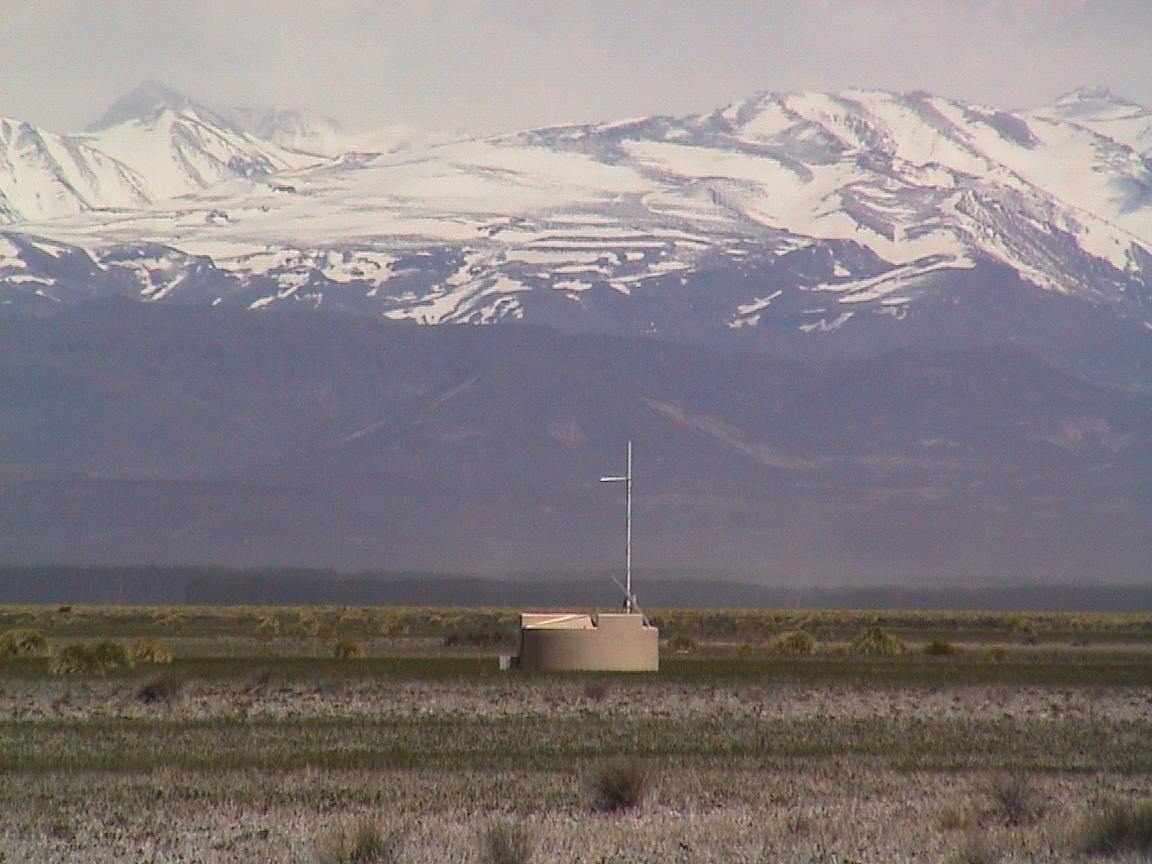
The development of a cosmic ray shower in the Earth's atmosphere. Click for a bigger version.

The Argentinian pampa near to Mendoza is the southern site for the world's biggest cosmic ray observatory. A site in Utah, USA, scans the northern hemisphere sky.
The size of the showers is one reason why earth-borne cosmic ray detectors must cover a large area. The rareness of the highest energy events is another. With just one particle of 1020 eV or more falling on one square kilometre every hundred years, the more square kilometres a detector covers, the more high energy cosmic rays it will catch. A 10 kilometre by 10 kilometre array, for example, could reasonably expect to see one such event every year.
One type of earth-based experiment consists of large passive volumes such as tanks of water. The particles of the shower collide with the nuclei of the water molecules and give rise to reaction products which can be detected by surrounding detectors covering the interior walls of the tank. Other experiments have several layers of flat gaseous detectors to detect the shower particles directly through the ionization they cause in the gas. By combining several experimental installations located at a certain distance from each other in a grid, a detector with a very large effective area can be obtained.
The other approach to studying cosmic ray primaries is to send detectors up into space. That's a difficult task since they have to be lighter and more compact than detectors on earth, and they have to survive the ride up. One such experiment, called the Alpha Magnetic Spectrometer (AMS) has looked, among other things, for anti-atoms in space. Detecting just a single atom of anti-carbon, for example, would prove that whole galaxies of antimatter must exist, because that single anti-atom would have been cooked up in an anti- star. So far, no antiatoms have been found in space, lending weight to the idea that our Universe is made entirely of matter, and that all the antimatter created at the Big Bang has since disappeared. Nature, it seems, really does have a preference for matter.

The Alpha Magnetic Spectrometer: the first particle physics experiment to be placed in orbit.